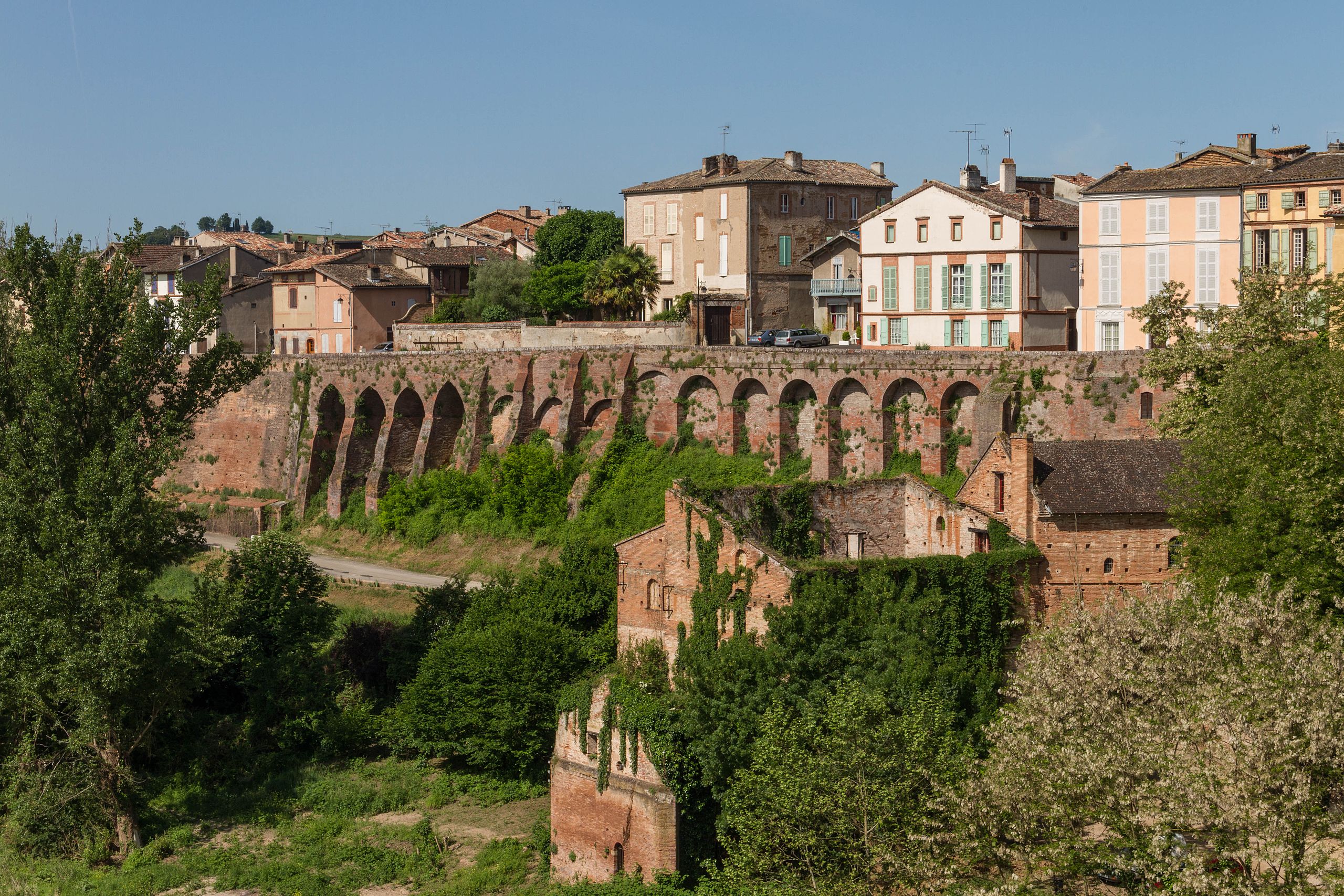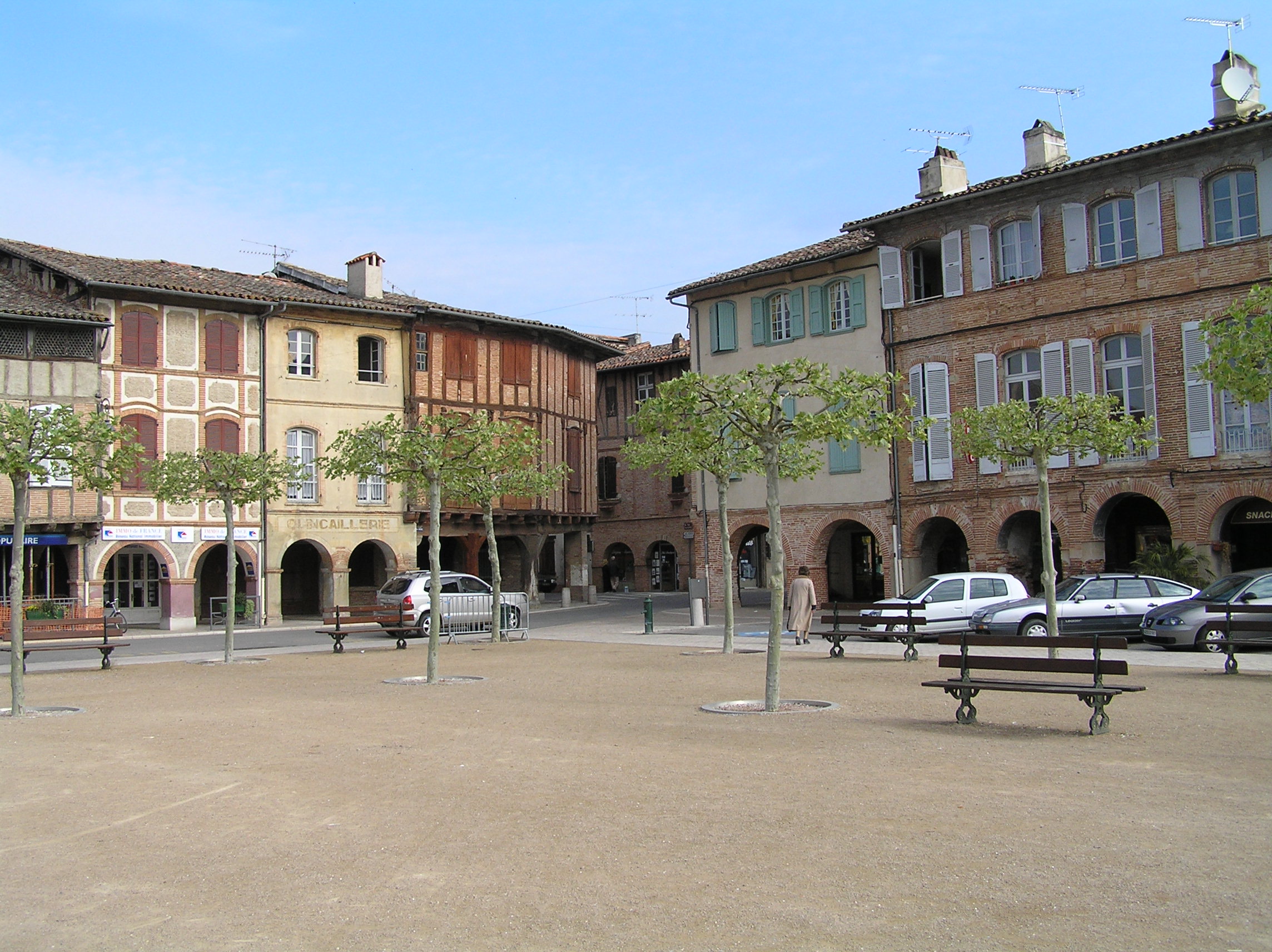A Journey into Authenticity: Discovering the Soul of France in Tarn’s Timeless Beauty

The towns of Rabastens, Gaillac and Lisle-sur-Tarn are Nicola Venning’s pick of Tarn’s property-hunting gems. Sun-drenched ancient quartiers are surrounded by rolling countryside and lush vineyards, and the history of the area is everywhere.
There are magnificent red- brick, period houses, austere cathedrals and churches, and fortified bastides often bizarrely perched on hilltops, all of which are the result of the medieval Albigensian (Catholic) Crusade against the upstart Counts of Toulouse and their rebellious Cathar followers.
The Renaissance also left its mark, as Tarn flourished during this period and became very prosperous, trading the highly prized blue pastel or woad. Albi, the regional capital, is a glorious mix of lavish merchant houses, impressive palaces and opulent abbeys.
Rabastens, Lisle-sur-Tarn and Gaillac are, to a greater or lesser degree, pretty – if much smaller-images of this magnificent city, but just as popular as they are all roughly a 30/40-minute drive along the A68 from Toulouse and its international airport.
“They are in one of the more expensive areas, in really good locations and very attractive,” says Laura Croxford, a negotiator with Beaux Villages estate agency, which has offices throughout France. All three towns also have their own train stations with a direct service to and from Toulouse, which is helpful if you just want to jump on a train from the airport and don’t want to be car-dependent.
However, this has also meant that homes in the area appeal to both the French who commute to La Ville Rose (Toulouse) as well as British second-home buyers, and demand is robust.
Agents report that it has become much harder to find properties now- particularly since the pandemic when working practices altered and more people moved into the countryside, mixing commuting with working remotely from home.
“The market in France has changed rather. It used to be led by buyers, but now it is much more of a seller’s market. We are having to throw away the rule book and start again, certainly when estimating the price of properties,” says Laura.
Although some buyers spend up to €2m, most of Laura’s customers, who are equally made up of both French and British, spend an average of €400,000 €500,000 for a main or second home. This sum buys, roughly, a three/four- bedroom farmhouse with pool and a generous, half-acre or more, garden.
“The French love the houses that have been renovated by the British who come over with much more money, will generally employ artisans to do the work and who are not counting the pennies as much. Many of the French buyers consider that the British have renovated them very nicely indeed,” says Laura.
The homes available range from elegant maisons de maître and similar maisons bourgeoise, to traditional Toulouse-style tall red-brick townhouses, as well as rambling farmhouses and white-stone maisons vigneronnes or winemakers’ homes and estates.
Unfortunately, the days when you could bag a bargain are long gone and there are not many ‘rescue and renovate’ projects to be found. However, you can still pick up smaller houses and modern bungalows with a reasonable-sized garden on the outskirts of these towns and they start from roughly €300,000. “They are not easy to find because the market has really grown in the past two years,” says Christine Juan, Associate Director of L’Esprit du Sud estate agency, which is based in Rabastens.
Renovation projects or homes in the €250,000- €360,000 price range can be found in more rural locations or less well-connected bastide towns such as pretty Cordes- sur-Ciel and Puycelsi.
GAILLAC

Calips – Wikipedia
One of the best views that encapsulates this area of Occitanie is from the ancient stone bridge over the Tarn river, looking back into historic Gaillac. From here, you can see the old town in all its mottled stone glory, the higgledy- piggledy terracotta roofs, as well as the grand Abbaye St- Michel, which hugs the banks of the river.
Part of the abbey, as befitting Tarn’s long history of wine production, is now a wine museum and tasting centre, La Maison des vins de Gaillac. Some of the oldest vines in France have been grown in this area and Gaillac was first known for producing wine almost 2,000 years ago.
“Generally, homes in Gaillac cost less than in Rabastens,” says Christine. “It is larger with plenty of amenities and although it is closer to Albi, it is further from Toulouse.”
Gaillac is the perfect place for food and wine lovers. There is a good range of quality restaurants (Vigne en Foule is particularly popular), a cinema and a regular weekly market. The lycée school in Gaillac is also well regarded. In the summer there are evening concerts, markets and wine- tastings dotted throughout the town. The tourist office can arrange visits and tastings at local vineyards and it is possible to hire bicycles and cycle La Route touristique des vins de Gaillac, through the vineyards and villages surrounding the town.
TYPICAL HOMES: White- stone maisons vigneronnes with garden and pool can be bought from about €450,000.
RABASTENS

Caroline Léna Becker – Wikimedia Commons
This quaint medieval town is rather like a (very) small Albi, in that it is dominated by impressive red-brick architecture and a stunning church, Notre-Dame-du-Bourg, which echoes the red-brick grandeur of Albi’s Ste-Cecile cathedral built with fortress- like strength against the rebellious Cathars.
The town centre is small and packed with a decent range of cafés, restaurants, useful shops and a Carrefour – which, unlike most supermarkets, handily opens on a Sunday. There are some good restaurants (although not as many as in Gaillac) as well as a cinema and a large and very popular market every Saturday, where it is possible to buy everything from goat’s cheese to horse meat to summer clothes. One of the nicest things you can do is queue and listen, if your French is good enough, to the shoppers discuss the various merits of the different types of strawberries or chicken. It’s an education in itself!
Wine lovers will enjoy a visit to Vinovalie – Cave de Rabastens, a selective wine merchant’s where it is possible to taste and buy some of the high-quality wines produced in the area. You can also pick up the vins de Gaillac cycle route from here; the roads are flat, quiet and make for very pleasant cycling.
The old quarter is made up of a few small lanes – with medieval cottages, an ancient school and the town hall-which lead down to the ramparts and old mill by the river. The Tarn really comes into its own here as there are lovely bankside walks and even a small ‘beach’ area where it is possible to safely swim. In the summer it becomes very busy.
The small hamlet of Coufouleux, on the outskirts, is home to the train station and is about a 10-minute walk from the centre, but surrounded by rolling fields and a wonderful array of wildlife (birds that visit the Tarn include exotic hoopoes and eagles).
TYPICAL HOMES: Rabastens’
townhouses start from about €300,000 and are either medieval or Renaissance red brick, with small courtyards (very few have gardens). A three-bedroom farmhouse in a nearby village (about 5km away), such as Loupiac, with a large garden and a pool would start from about €350,000.
The village does not have any shops or restaurants, but is only a five-minute drive from Rabastens. Modern three- bedroom bungalows with a small garden on the outskirts of Rabastens start at €300,000.
LISLE-SUR-TARN

Laurent Fraquet – Wikimedia commons
If Hansel and Gretel were to choose a place in which to live, they might well select the timber-framed, wattle-and- daub delight that is Lisle-sur- Tarn. All old beams, pink and ochre walls and patchwork roofs, this stunning medieval town was built in a grid system by Raymond VII, Count of Toulouse, in the 13th century- and has barely changed since. The central market, Place Paul Saissac, is surrounded by a square of elegant arched colonnades that indicate how prosperous Lisle was, due to its production of pastels and wine.
One of the nicest things to do here is to order a croissant and a noisette, or small coffee with milk, at one of the cafés on the square and simply watch the world go by. There is a small grocery store, a popular bakery, a delightful Sunday market and, on the edge of the town, a large lake where it is possible to walk, camp and fish.
Few houses in Lisle have gardens, although its commuting links to Toulouse means it is always in demand and prices hold their value. Most British buyers prefer to buy on the outskirts where they can get a home with land.
TYPICAL HOMES: A grand maison de maître with seven bedrooms, small garden and a pool in the centre, is roughly €80,000. A modern six- bedroom home with a third-of- an-acre garden on the outskirts starts from about €375,000.
A unique blend of legal, financial and tax advice along with in-depth property guides, inspirational real life stories, the best properties on the market, entertaining permanent pages and the latest property news and market reports make French Property News magazine a must-buy publication for anyone serious about buying and owning a property in France.
Lead photo credit : Shutterstock
Share to: Facebook Twitter LinkedIn Email
More in French travel, Gaillac, Nouvelle Aquitaine, Occitanie, Provence-Alpes-Cote d'Azur, Rabastens, Tarn



